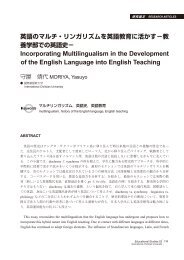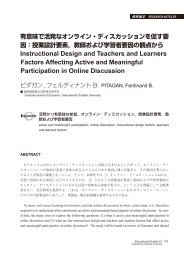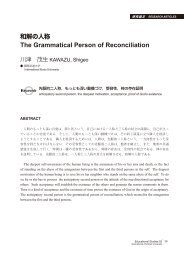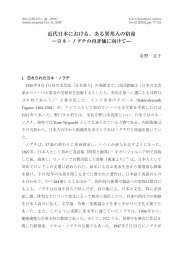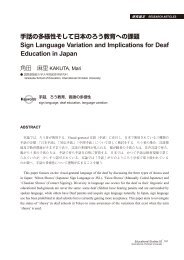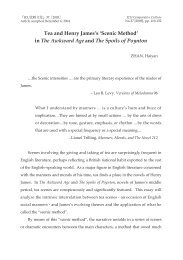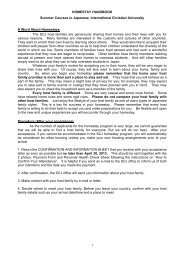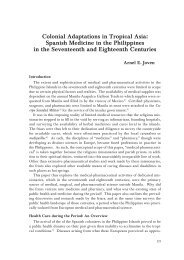Untitled - subsite - å½éåºç£æ大å¦
Untitled - subsite - å½éåºç£æ大å¦
Untitled - subsite - å½éåºç£æ大å¦
Create successful ePaper yourself
Turn your PDF publications into a flip-book with our unique Google optimized e-Paper software.
134<br />
under criticism because of its repetitive narcissism and its lack of relativity. The<br />
change of discourse policy thus shows not only the development of 20th-century<br />
Chinese womens fiction, but also its weaknesses and predicament.<br />
I want to fly upon traditions wings<br />
Phan Huyen Thu (Film Producer, Poet)<br />
In todays Vietnam, the generation gap is a serious problem; the older generation<br />
insists upon the maintenance of traditional values, while unaware of the new<br />
problems and new sets of values facing the younger generation. Especially the<br />
controversy revolves around the issue of sex. The Tho tre or Young poetry<br />
movement, of which I myself am a part, reflects the new sets of values, using new<br />
styles and dealing with new themes such as their personal experiences. It tries<br />
to revolutionalize sex through new usage of language. It attracts the younger<br />
generation as well as fierce criticism. My main concern is more on the creation of a<br />
new language, though sex is also one of the focal points. The Vietnamese language<br />
is infinitely copious and beautiful, rich in sounds, melodies and images. However, the<br />
alphabets we use do not correspond sufficiently and Vietnamese poets have ignored<br />
the polysemic characteristics of the language too long, thus caused the loss of beauty<br />
in the language. I resurrect some ancient words, putting them side by side with a<br />
brand new word. I try to describe feelings of the modern life by classic phrases and<br />
concepts. By combining modern words with the beauty of the Vietnamese traditional<br />
language, I believe I can come up with the expressions suitable for todays Vietnam.<br />
Japanese Names and Gender<br />
HIBIYA, Junko (International Christian University)<br />
This presentation analyzes the trend of names in Japan after 1945 and its gender<br />
implications. The period is categorized into four groups, 1)1945-59, 2)1960-74,<br />
3)1975-89, 4)1990-2004. The top few on each list show the gender tendency in each<br />
respective period. For instance, in the period 1) and 2), the male names are often<br />
composed of one Chinese character and 3 syllables. The characters chosen are that<br />
of success, promotion, advance, health, and intelligence. On the contrary, the female<br />
names are mostly composed of two Chinese characters (one meaningful and another<br />
meaning child). The characters used are for happiness, peace, love, honesty, and<br />
generosity. In the period 3), the male names with the characters meaning big or<br />
wide shows how the society cherished the idea of scale in men. The period 4) sees<br />
the appearance of genderless names. And the characters used are often related to<br />
nature.<br />
How is Womans Body represented by the Japanese Cultural Administration: Gender<br />
Representation of Sculptures in Public Space<br />
NISHIYAMA, Chieko (Tokyo International University)<br />
In Japan, sculptures have been installed in public spaces since the Meiji Era. From



